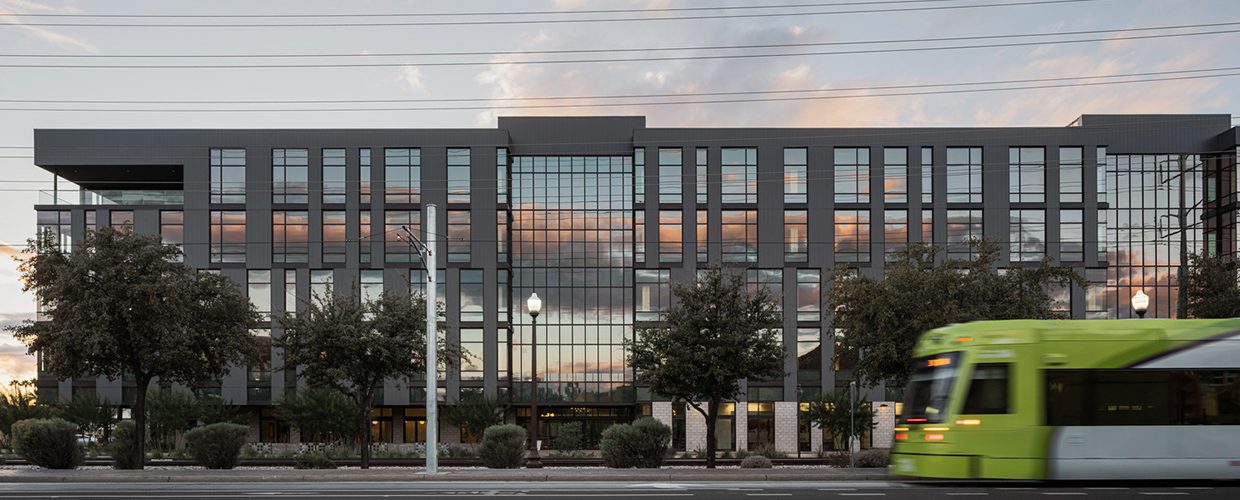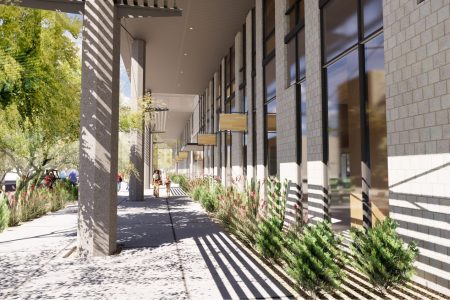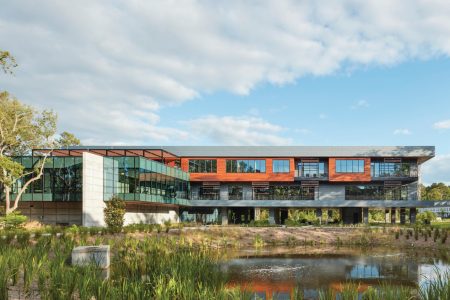Four Reasons Green Design Makes Good Business Sense

RSP Sustainable Design Specialist Jeremi Van Wave explains why green design practices are crucial for financial success.
For years, it has felt as though developers were supposed to make sustainable choices out of the “goodness of their hearts.” It was expensive and the immediate cost/benefit analysis was questionable, even if it was good for the environment in the long run. Now, thankfully, that calculus has changed. The truth is, green design has always made a strong business case, but our mindset has definitely shifted to seeing the value rather than the cost. Here are just four reasons that go beyond the fact that it’s the right thing to do for the Earth.
1. Tenant and Customer Demand for Green Design is Growing
More companies have environmentally friendly practices in their mission statements than ever before. According to the UN Sustainable Development Goals report, 93% of the world’s 250 largest companies report on sustainability. And there was a 26% increase from 2020 to 2022 in consumers saying they are more likely to buy from sustainable sources, according to NielsenIQ. A full 70% of consumers say they will pay more for brands that are environmentally responsible. That is a huge market share and the world’s biggest companies are paying attention.
That attention extends to offices, storefronts and other facilities, so mitigating the ecological effects of these built environments increases the tenant pool for developers and brokers. And when companies are required to report on their emissions and environmental standards, it’s an easy win when the buildings they occupy are already built in a sustainable way. Particularly for office buildings, which have steep competition thanks to the increase in remote work, it just makes sense to cast the widest net and attract the greatest possible number of tenants through sustainable practices and green design.
2. Public Policy is Coming Around to Green Design
Market forces alone won’t solve the problem of carbon emissions. The onus has started to shift to municipal, state and even the Federal government to take the lead. On the Federal level, the GSA has recently stated that it will prioritize lower-carbon construction materials for all federal and federally funded projects. In fact, GSA Administrator Robin Carnahan says, “Using domestic, lower-carbon construction materials is a triple win – creating good-paying American jobs, reducing energy costs, and tackling climate change to ensure a healthy planet for the next generation.”
Many cities and regulators are starting to realize that their building stock is a valuable material bank and are starting to mandate design for deconstruction (see Palo Alto and Portland, as just two examples). Many public agencies have set targets — some codified in law or, at least, regional building codes — to achieve net-zero carbon emissions by specified dates. Crucially, the world’s two biggest emitters, the US and China, have both committed to carbon neutrality by 2050 and 2060 respectively. The EU is also setting the pace with a new set of policies to achieve its sustainability goals: the EU Green Deal and Climate Law set binding targets to cut emissions by 55% by 2030 (from 1990 levels) and to reach climate neutrality by 2050.
Last year, the Securities and Exchange Commission released expansive rules that would require publicly traded companies to provide more information on how their operations affect the climate and carbon emissions. The new proposed rule would require companies to disclose how climate risks affect their business, outline their own greenhouse gas emissions and report on climate-related targets and goals.
Gary Gensler, the Chair of the SEC, says the rules are aimed not only at helping to protect investors but also offer greater clarity about corporate carbon emissions.
“I really do think that the SEC has a role to play here when this amount of investor demand and need is there,” he said. It’s self-evident that investors make decisions based on what they see as a company’s ability to generate cash in the future. If climate change is expected to erode a company’s earning potential, investors have an incentive to learn about that risk—and mitigate it—as much as possible.
3. The Dollars and Cents Make Sense
In the past, the upfront costs of renewable or environmentally friendly construction materials and green design selections were often prohibitive, even if it were possible to use them at scale. Now, environmentally friendly technology and renewable energy sources are getting cheaper and are much more widely available. Add to the fact that there is a historic number of incentives to be earned tied to the Inflation Reduction Act, and it’s almost more expensive not to build green.
Cross-Laminated Timber (CLT) products, for example, haven’t been locally available in most parts of the country, despite it being a material that can sequester as much carbon as a traditional concrete building creates. Some intrepid developers have insisted on using this renewable material, creating enough case studies in all climates (including the extremes of the Arizona desert) that the material is being used much more widely. Building codes and engineering practices have caught up with CLT designs in many places as well, making it more cost effective overall than using concrete. And from a design perspective, it has the potential to create stunning architecture and interiors.
At The Beam on Farmer, the first CLT building in Arizona, we saw this potential in action. The CLT was not available locally, but the groundwork has now been laid for using this renewable resource more frequently. As more developers choose to use it, the more local options will become available. Other past concerns developers and design teams may have had about using this material are rapidly becoming obsolete. One issue, the seemingly required tight column grid, made architects wary of using it. We worked with our structural engineering team to incorporate deeper beams and thus, a sparser column grid, giving the space the natural light and airiness tenants expect from a Class-A office building.
The height also made it possible to use a low-pressure underfloor air distribution system that is among the first in CLT construction. The system drives air to the perimeter of the building more efficiently, increasing thermal comfort with less energy, which is a crucial consideration in the blistering Arizona sun. The exposed ceiling pattern also theoretically decreases the amount of material used in tenant fit-outs, driving down the embodied carbon of potential TI’s. And, finally, building codes across the country are rapidly catching up to the use of CLT and other sustainable materials, paving the way for their use in many more applications.
We even took things a step further and repurposed the packaging in which the CLT was shipped. We worked closely with a local woodworker to shape the timber into meeting tables that now sit in our Phoenix office.
As more buildings use more sustainable technology and materials, they are smoothing the path for future sustainable development. Previous justifications for use of old-fashioned, highly pollutive materials and systems are no longer founded in most cases and each new sustainable development further proves this point.
4. We’re Approaching the Point of No Return—And That’s a Good Thing
Yes, this statement could refer to global climate change, but in this case, we’re talking about green power. All emerging technology with long-lasting implications has two paths: they either fizzle out (remember minidiscs?) or they become pervasive enough that purchasing the older technology no longer makes financial sense, like investing in VHS tapes in 1998. By all accounts, we are reaching that point with renewable energy and other green technology with the latest research from Bloomberg stating that onshore solar and wind projects cost approximately 40% less to build than new coal or gas plants.
The United States currently draws about 20% of our energy from renewable sources. If we continue on our current trajectory, we will hit 50% in about a decade. At that point, why would any developer, building owner or company leader invest in an old-fashioned power grid that is rapidly becoming obsolete? And if developers expect their current projects to be around in ten years, and they probably do, it makes just as much sense to make the change now and get ahead of the curve.
Essentially, the use of sustainable materials and processes is becoming the norm. Any owner or developer for a new project today should view this writing on the wall as a sign that environmental sustainability will be the only path toward financial sustainability in just a few short years.
Featured Image: The Beam on Farmer | Photographer: Jason Roehner





